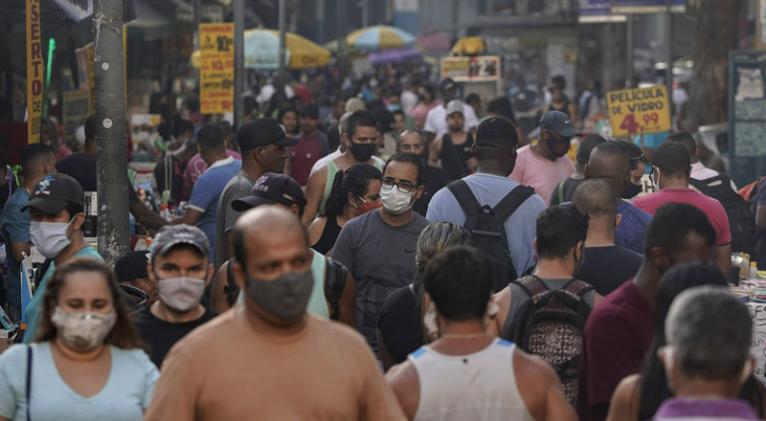Latin America’s critical food markets fuel virus spread

Mexico City’s main wholesale market detects dozens of coronavirus cases every week. A covered food market in Venezuela was the source of one of the largest outbreaks in the country. And every single merchant in a vast market in Peru has tested positive for the virus.
As the coronavirus pandemic swamps countries from Mexico to Argentina, public health officials are struggling to contain outbreaks seeded at Latin America´s iconic covered food markets, a beloved, essential feature of life in the region – and a near-perfect setting for spreading the disease.
With hundreds of millions relying on such markets for their food and livelihoods, officials are debating whether and how they can operate safely. With inconsistent testing, huge gaps in health coverage, poorly enforced social distancing measures and widespread inequality, many Latin American countries are seeing large and rising numbers of new cases daily, making the region one of the hardest-hit in the world.
Mexico City´s massive Central de Abasto is an approximately 3-square-kilometer (1-square-mile) compound of lots, warehouses, loading bays and wholesale outlets that is the main depot for getting fruit, vegetables and other produce to about 20 million consumers in the metropolitan area. Its labyrinthine hallways are crowded with 90,000 workers and up to 300,000 customers each day.
The market has recorded 690 confirmed coronavirus cases, with a peak of over 200 cases per week in May. But it installed its own testing center and triage area and instituted contact tracing long before the city itself did, and the weekly number of new cases has since fallen to about 60 or 70, said its director, Hector Garcia Nieto.
Closing it is out of the question.
“It would be like closing the stomach of part of the nation,” said Garcia Nieto.
That truth is repeated throughout Latin America, where clusters of street vendors often grow up around the markets; where millions of farmers have no other outlet for their produce; and where poverty prevents consumers from buying at grocery stores.
Peru has more than 2,600 food markets. In May, the government said that after examining thousands of vendors, it found that 36 of Lima´s largest markets were points of contagion.
Jhoan Faneite, a 36-year-old Venezuelan migrant, picks up COVID-19 victims for a funeral home in the city.














Add new comment